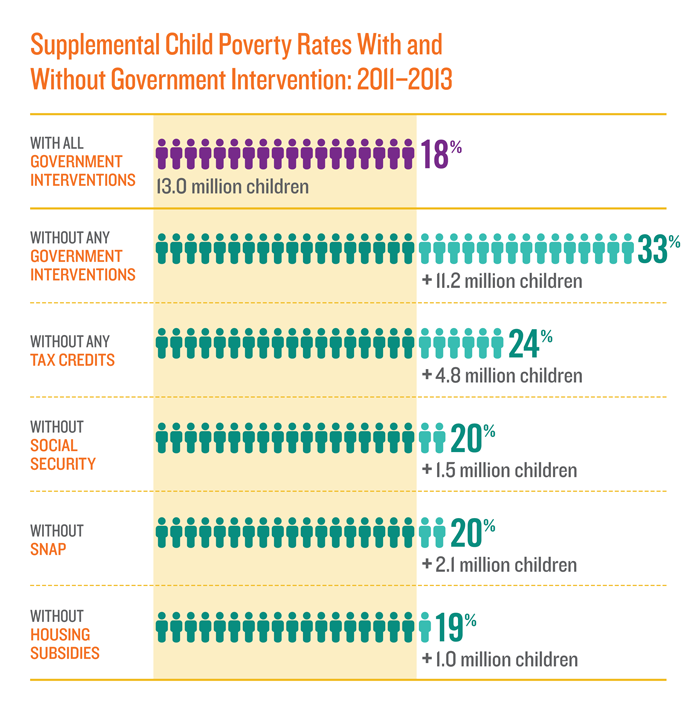The Annie Casey Foundation in a report “Measuring Access to Opportunity in the United States” released a report using the latest data about child poverty in the U.S. In this report, they estimated the impacts of several key federal government anti-poverty programs. They conclude that the percent of children living in poverty declined from 33% to 18% when government programs are included. They state:
“The federal government’s official poverty measure, created in the 1960s, fails to illustrate the impact of programs designed to help families succeed. This KIDS COUNT data snapshot highlights the Supplemental Poverty Measure (SPM), which captures the effect of safety-net programs and tax policies on families. By using the SPM, researchers have determined that the child poverty rate has declined from 33% to 18% as a result of these programs and policies.”

See Report: Click Here
“To better understand how families are faring, the U.S. Census Bureau created the Supplemental Poverty Measure (SPM) in 2011. It is based on decades of research culminating in recommendations made by a
National Academy of Sciences panel in the mid-1990s. The SPM measures the impact of a number of important social programs such as SNAP and the Earned Income Tax Credit (EITC) and accounts for rising costs and other changes that affect a family’s budget. Unlike the official poverty measure, the SPM is adjusted for geographic variations in the cost of living. This new measure is an important advance in understanding
child poverty and the effects of safety net programs and tax policies on families. In fact, by using the SPM, researchers determined that the rate of children in poverty has declined since 1990, while the official
measure shows no real change.”
Specific impacts of the major programs are seen here:
On the plus side, it appears that some of the government anti-poverty programs actually do work. On the other hand, there are questions about whether the official poverty measure is realistic.
The Casey report notes: “Researchers have found that, on average, families need an income of roughly twice the official poverty threshold, currently about $24,000 per year for a family of four, to cover the entire cost of basic expenses for housing, food, transportation, health
care and child care.”
